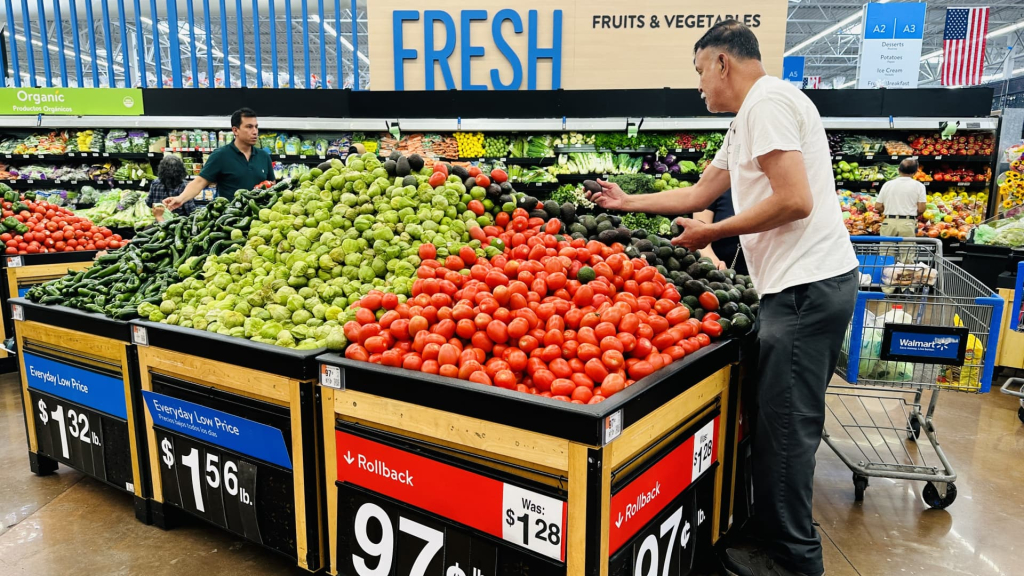Customers at Walmart can expect price hikes in the near future.
Walmart’s Chief Financial Officer, John David Rainey, announced on Thursday that the retail powerhouse, traditionally known for its low prices, will be compelled to increase the costs of multiple products due to tariffs. This decision comes despite a recent 90-day reprieve that lowered duties on imports from China to 30%. Other nations are facing a 10% duty on their goods, adding to the pressure on pricing.
“We’re doing our best to navigate this situation,” Rainey stated in an interview with Finance Newso. “However, the rapid pace and extent of these price increases is somewhat unprecedented.”
He assured investors that Walmart is dedicated to maintaining competitive pricing, even absorbing some tariff-related costs. However, he cautioned that consumers should expect to see price increases starting late May and continuing into June. Rainey also predicted that the fiscal second quarter, which commenced earlier this month, would experience more substantial price hikes than usual.
As the largest retailer and grocery seller in the U.S., Walmart provided crucial insights into which products will likely see price increases and the timeline for these changes. The company revealed details regarding specific items and departments that would be most affected by the imposition of tariffs.
While approximately one-third of Walmart’s products in the U.S. are domestically produced, the retailer significantly depends on international supplies, especially from China, Mexico, Vietnam, India, and Canada, according to CEO Doug McMillon during the earnings call.
McMillon noted that tariffs on imports from countries like Costa Rica, Peru, and Colombia have impacted the prices of various imported commodities, including bananas, avocados, coffee, and roses. He also highlighted that a significant portion of merchandise, particularly toys and electronics, is sourced from China.
Walmart shared how retailers are managing inventory amidst fluctuating tariff levels. Recently, Walmart and other retailers faced a staggering 145% tariff on imports from China, which was alleviated when President Donald Trump announced a temporary agreement to reduce these duties to 30%.
Retailers and consumers are grappling with uncertainty regarding when price hikes will occur, leading to some early purchases of large items, like vehicles. This anxiety, however, has made consumers more cautious with spending in other categories. Concurrently, businesses are attempting to forecast customer demand while planning their orders for critical shopping periods, such as back-to-school and holiday seasons.
To mitigate exposure to tariffs along with introducing price increases, Walmart has implemented alternative strategies. Suppliers are shifting away from materials subjected to tariffs, like aluminum, opting for substitutes such as fiberglass. Additionally, retailers are exploring other sourcing options and product varieties.
Rainey noted that Walmart has reduced order sizes for items anticipated to see higher price increases due to tariffs, as this could potentially dissuade customers from purchasing those items.
Despite the challenges presented by tariffs, Walmart has not downgraded its sales expectations for the year—in fact, such difficulties might attract more customers to its stores. The company reiterated its full-year financial forecast on Thursday, even though it fell slightly short of Wall Street’s revenue expectations for the previous quarter.
During a Finance Newso segment with Courtney Reagan on “Squawk on the Street,” Rainey pointed out that consumers typically seek value in times of increased prices, which could present Walmart with an opportunity to gain market share. He reiterated the company’s commitment to maintaining price competitiveness even if it means sacrificing some profit margins.
“There may be instances where we choose to adopt a more aggressive strategy,” Rainey said. “In the short term, we might absorb some costs for the long-term benefit.”


























